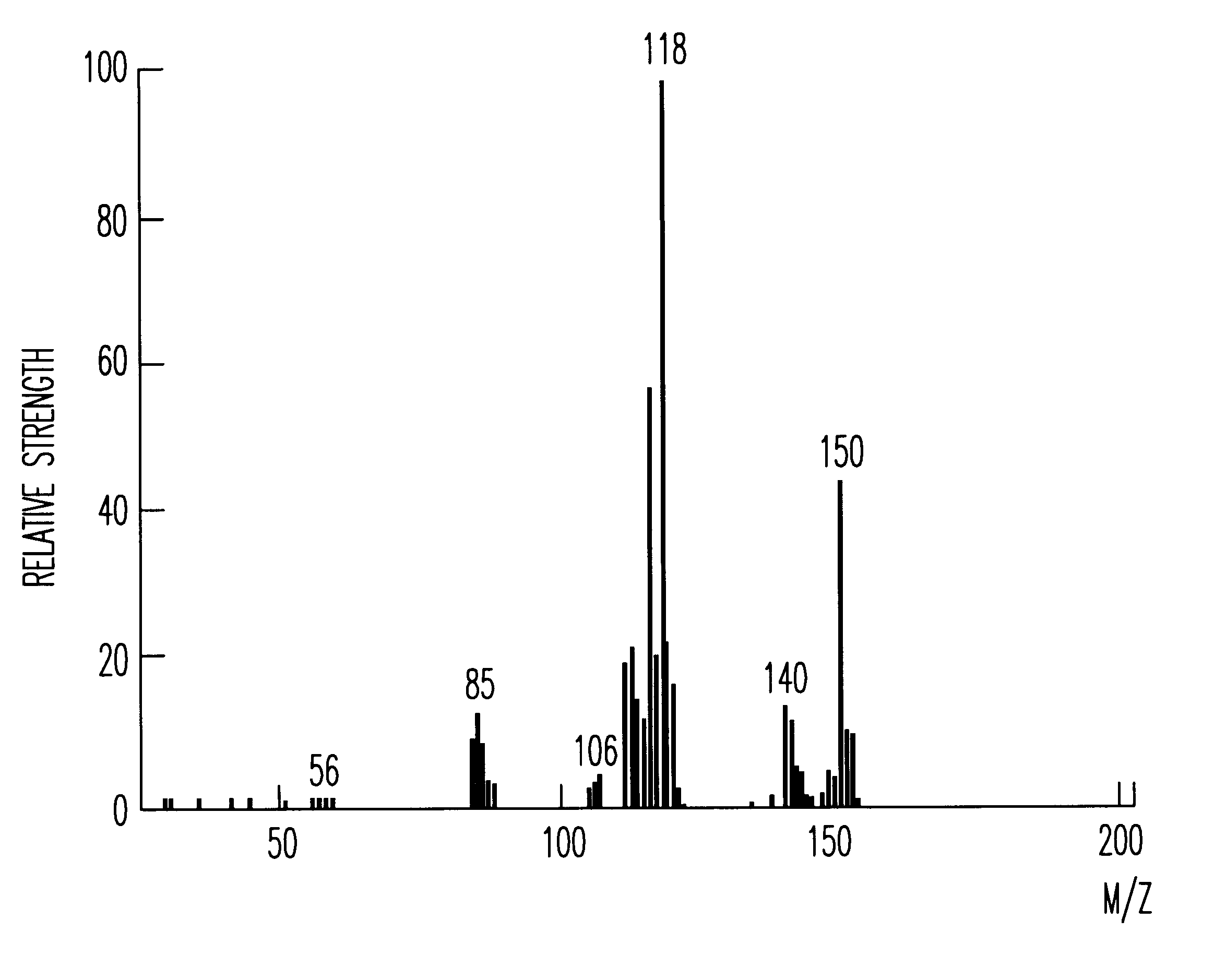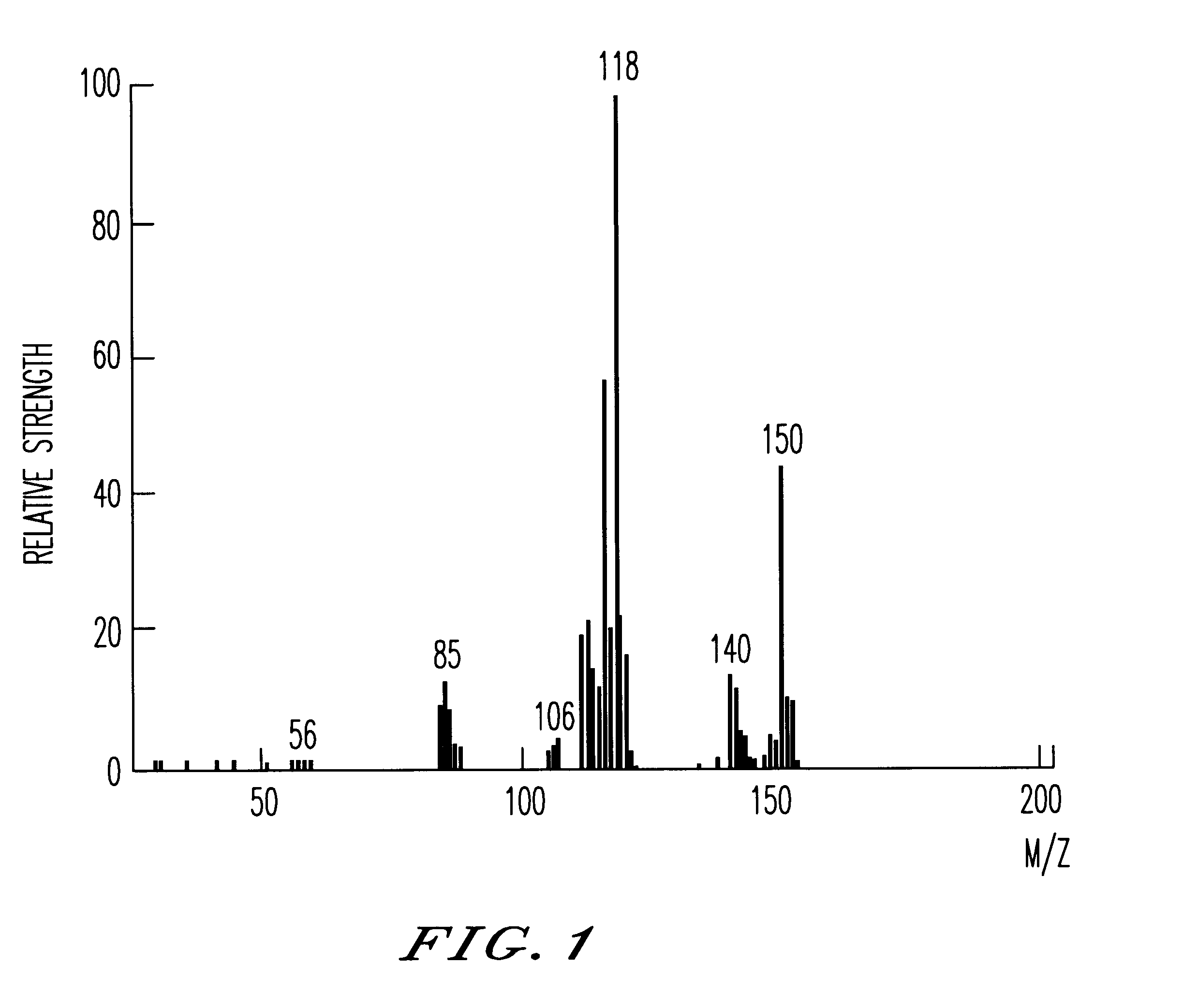Process for the formation of silicon oxide films
a technology of silicon oxide and film, applied in the direction of liquid/solution decomposition chemical coating, electric/magnetic/electromagnetic heating, nuclear engineering, etc., can solve the problems of low productivity, low production yield, and inability to easily apply to a substra
- Summary
- Abstract
- Description
- Claims
- Application Information
AI Technical Summary
Benefits of technology
Problems solved by technology
Method used
Image
Examples
synthesis example 1
The inside of a 2-liter four-neck flask equipped with a thermometer, a condenser, a dropping funnel and an agitator was substituted with an argon gas, 1.5 liters of dried tetrahydrofuran and 27.4 g of metal lithium were then charged into the flask, and the content of the flask was bubbled with an argon gas. While this suspension was cooled with ice under agitation, 500 g of diphenyldichlorosilane was added through the dropping funnel. The reaction was continued until the metal lithium completely disappeared. Thereafter, the reaction mixture was poured into ice water to precipitate the reaction product. This precipitate was separated by filtration and washed fully with water and then with cyclohexane. Further, this crude product was recrystallized from ethyl acetate to give 216 g of undecaphenylcyclohexasilane. Its structure was checked by TOF-MS, NMR and IR. Then, 200 g of dodecaphenylcyclohexasilane and 2,500 ml of toluene were charged into a 1-liter flask, 5 g of aluminum chloride...
synthesis example 2
The recrystallization mother liquor of the dodecaphenylcyclohexasilane of Synthesis Example 1 was further purified by the method of chromatography to give 55 g of decaphenylcyclopentasilane as a side product. Using this side product, 25 g of decachloropentasilane was obtained under the same reaction condition as in Synthesis Example 1. The decachloropentasilane was reduced to give 6 g of cyclopentasilane(Si.sub.5 H.sub.10). The production thereof was checked by MS, .sup.29 Si--NMR and IR spectra. The MS spectrum thereof is shown in FIG. 1.
synthesis example 3
The inside of a 3-liter four-neck flask equipped with a thermometer, a condenser, a dropping funnel and an agitator was substituted with an argon gas, 2 liters of dried tetrahydrofuran and 75 g of metal lithium were then charged into the flask, and the content of the flask was bubbled with an argon gas. While this suspension was agitated at 0.degree. C., 500 g of phenyltrichlorosilane was added through the dropping funnel. The reaction was continued at 0.degree. C. until the metal lithium completely disappeared and, thereafter, the content of the flask was further agitated at room temperature for 12 hours. The dark-brown reaction mixture was poured into ice water to precipitate the reaction product. This precipitate was separated by filtration, washed fully with water and vacuum dried to give 210 g of a phenyl group-containing polycyclic silicon compound. A hundred fifty grams of the phenyl group-containing polysilane compound was caused to be suspended in 2 liters of toluene, 5 g o...
PUM
| Property | Measurement | Unit |
|---|---|---|
| temperatures | aaaaa | aaaaa |
| temperatures | aaaaa | aaaaa |
| thickness | aaaaa | aaaaa |
Abstract
Description
Claims
Application Information
 Login to View More
Login to View More - R&D
- Intellectual Property
- Life Sciences
- Materials
- Tech Scout
- Unparalleled Data Quality
- Higher Quality Content
- 60% Fewer Hallucinations
Browse by: Latest US Patents, China's latest patents, Technical Efficacy Thesaurus, Application Domain, Technology Topic, Popular Technical Reports.
© 2025 PatSnap. All rights reserved.Legal|Privacy policy|Modern Slavery Act Transparency Statement|Sitemap|About US| Contact US: help@patsnap.com



